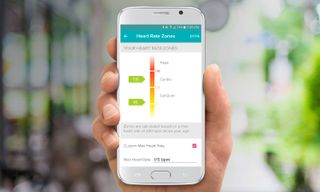Fitbit User Guide: Essential Tips and Tricks
Whether you just bought a Fitbit activity tracker or have had one for years, here's how to get the most out of your device.
Analyze Your Heart Rate
The Fitbit Charge 2 and Fitbit Surge both can track your heart rate, but it's important to know what that data means if you're resting, working out, or sleeping.

If your goal is to burn fat, you'll probably want to focus on low-intensity exercise. If your tracker has a heart rate monitor, you can make sure your workout stays within a "fat burn" zone. If you have a Charge 2, for instance, press the button on the side of your tracker to navigate to heart rate, and if you're in your fat-burning zone, that will be indicated on your screen, and the same goes for your cardio workout zone.
Generally, your maximum heart rate is 220 minus your age, according to Live Science. Your target heart rate should be somewhere between 50 percent and 85 percent of that number.
If you know that your resting heart rate is lower or higher than normal, the default heart-rate-zone calculations may not be accurate for you. In that case, you can adjust them in your account settings, by tapping on Heart Rate Zones and entering beats per minute manually.
Sign up to get the BEST of Tom's Guide direct to your inbox.
Get instant access to breaking news, the hottest reviews, great deals and helpful tips.
Current page: Analyze Your Heart Rate
Prev Page Connect with Friends Who Have Fitbits Next Page Set Up Smartphone NotificationsAlthea Chang is Associate Director of Content Development for Consumer Reports and was previously a Senior Writer for Tom's Guide, covering mobile devices, health and fitness gadgets and car tech.
